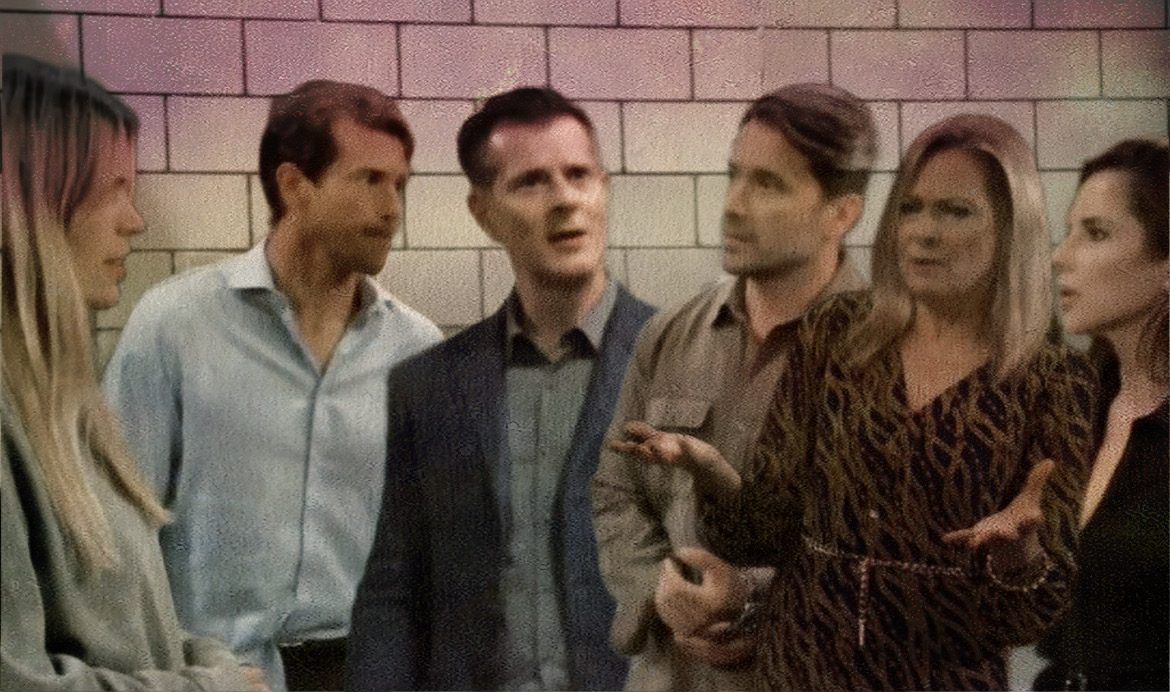
The Unfiltered Echo: How Good Housekeeping’s Reader Stories Resonate in a Digital Age
In an era saturated with perfectly curated digital lives, where filters smooth out imperfections and carefully crafted narratives dominate social feeds, there remains an enduring hunger for the authentic, the relatable, and the genuinely human. This is precisely the space occupied and powerfully amplified by platforms like Good Housekeeping’s "readerstories.ca" (or its equivalents across various regional domains). Far from being mere digital curiosities, these reader-submitted tales represent a vital, evolving tradition that connects millions, validates shared experiences, and offers a compelling counter-narrative to the glossy, often unattainable ideals presented elsewhere.
Long before the advent of blogs, vlogs, or social media influencers, magazines like Good Housekeeping understood the magnetic power of real-life stories. Founded in 1885, Good Housekeeping quickly established itself not just as a guide to domesticity and consumer goods, but as a forum for women to share their experiences, triumphs, and tribulations. Columns like "Letters to the Editor," "My Story," or "Confessions" became beloved features, offering readers a window into the lives of others who, despite their diverse backgrounds, often faced similar challenges and joys. This wasn’t just about entertainment; it was about community, validation, and a profound sense of not being alone.
The digital frontier has merely amplified this innate human desire for connection through narrative. "Readerstories.ca" stands as a testament to how a legacy brand can not only adapt to the internet age but thrive by leaning into its core strengths. It’s a modern iteration of those classic magazine columns, democratized and made instantly accessible. Here, the traditional gatekeepers of publishing are still present, ensuring quality and relevance, but the source material comes directly from the everyday lives of its audience.

The Power of Authenticity in a Curated World
What makes these stories so compelling in a world often critiqued for its superficial digital veneer? It’s their unwavering authenticity. These aren’t professionally ghostwritten pieces designed to sell a lifestyle; they are raw, heartfelt accounts from individuals navigating the complexities of life. From heartwarming tales of unexpected kindness to poignant narratives of loss and resilience, from clever hacks for home organization to candid discussions about marital struggles or parenting dilemmas, the breadth of topics is as vast and varied as life itself.
"In a landscape dominated by perfectly filtered selfies and aspirational travel photos, our reader stories offer a refreshing dose of reality," explains Eleanor Vance, Managing Editor of Good Housekeeping Digital, in a hypothetical interview. "People are hungry for narratives that mirror their own lives, not just the highlights. They want to know how others cope with the messy middle, how they find joy in the mundane, or overcome seemingly insurmountable obstacles. That’s where the true connection happens."
This authenticity fosters a unique bond between the storyteller and the reader. As one frequent contributor, Sarah Jenkins from Toronto, shared in an email, "Submitting my story about juggling work and raising three kids felt incredibly vulnerable, but the outpouring of support and shared experiences from other readers was overwhelming. It’s like looking into a mirror and seeing someone else’s journey that perfectly reflects your own unspoken fears or triumphs. It makes you feel seen."
A Tapestry of Human Experience
The thematic richness of "readerstories.ca" is striking. While Good Housekeeping‘s brand might evoke images of pristine homes and perfect families, the stories themselves delve much deeper. They explore:
- Everyday Heroism: Accounts of individuals performing small acts of kindness, overcoming personal fears, or quietly making a difference in their communities.
- Relationship Realities: Candid discussions about the highs and lows of marriage, the challenges of parenting teenagers, the complexities of friendships, or navigating family dynamics.
- Personal Growth and Resilience: Stories of career changes, battling illness, coping with grief, or finding new purpose in later life.
- Home and Hearth: Beyond decor tips, these are tales about making a house a home, creating traditions, or finding comfort and refuge in one’s personal space.
- Financial Wisdom (and Woes): Practical advice, lessons learned from financial mistakes, and strategies for smart saving and spending.

Each story, whether a brief anecdote or a detailed personal essay, adds a thread to a larger tapestry of human experience. They serve as a collective wisdom, a shared understanding that transcends individual circumstances.
Building Community and Fostering Empathy
Beyond the individual narratives, "readerstories.ca" functions as a powerful community builder. The comments section beneath each story often transforms into a vibrant forum where readers offer advice, share their own similar experiences, express empathy, or simply offer words of encouragement. This interaction elevates the platform beyond mere passive consumption of content; it creates a dynamic, supportive ecosystem.
In an increasingly fragmented world, where genuine human interaction can sometimes feel scarce, these digital spaces offer a crucial sense of belonging. They remind readers that they are part of a larger collective, facing similar struggles and celebrating similar joys. This communal aspect is perhaps one of the most underrated contributions of reader story platforms.
The Editorial Hand: Curating Authenticity
While the stories originate from everyday individuals, the editorial team at Good Housekeeping plays a crucial role in shaping and presenting them. It’s a delicate balance: maintaining the raw authenticity of the original submission while ensuring clarity, readability, and adherence to the brand’s editorial standards.
"Our role isn’t to sensationalize, but to polish the raw gem of an experience, ensuring it shines authentically while respecting the storyteller’s voice and privacy," Vance explains. "We often work closely with contributors, helping them refine their narrative, ensuring it flows well, and sometimes even suggesting ways to broaden its appeal without losing its core message. It’s a collaborative process aimed at empowering the storyteller."
This editorial curation is vital. It filters out inappropriate content, verifies facts where possible (though the primary value is often the subjective experience), and ensures that the stories resonate with the broader Good Housekeeping audience. It’s the human touch that transforms a personal anecdote into a widely relatable piece of content.
The Psychological Impact: Sharing as Healing
The act of sharing one’s story can be profoundly therapeutic. For many contributors, writing down their experiences offers a form of catharsis, a way to process emotions and gain perspective. The knowledge that their story might help or inspire someone else adds another layer of meaning.
Conversely, for readers, encountering a story that mirrors their own struggles can be incredibly validating. It normalizes their experiences, reduces feelings of isolation, and can even offer practical solutions or new perspectives. This symbiotic relationship between storyteller and audience creates a powerful feedback loop of empathy and understanding. The simple phrase, "Me too," uttered in the comments section, can be a profound balm for a troubled soul.
Challenges and the Enduring Appeal
While largely a force for good, the open forum of reader stories isn’t without its nuanced considerations. Issues of privacy, the potential for oversharing, and the editorial responsibility to handle sensitive topics with care are constant considerations. Good Housekeeping‘s reputation and established editorial guidelines are crucial in navigating these challenges, fostering a safe space for both contributors and readers.
Despite these complexities, the enduring appeal of "readerstories.ca" and similar platforms speaks volumes. In a media landscape increasingly dominated by professional content creators, artificial intelligence-generated articles, and highly stylized visual narratives, the human appetite for genuine connection remains insatiable. These stories offer a vital antidote – a reminder that behind every screen name and every perfect image, there are real people living real lives, filled with all the messy, beautiful, and utterly human experiences that bind us together.
In essence, Good Housekeeping’s reader stories stand as a testament to the enduring power of the human narrative. They are a bridge between tradition and modernity, a digital campfire around which millions gather to share, to learn, to empathize, and to find comfort in the knowledge that, in the grand tapestry of life, no one is truly alone. They are the unfiltered echo of life, resonating powerfully in the digital age, proving that sometimes, the most compelling stories are the ones told by us, for us.


